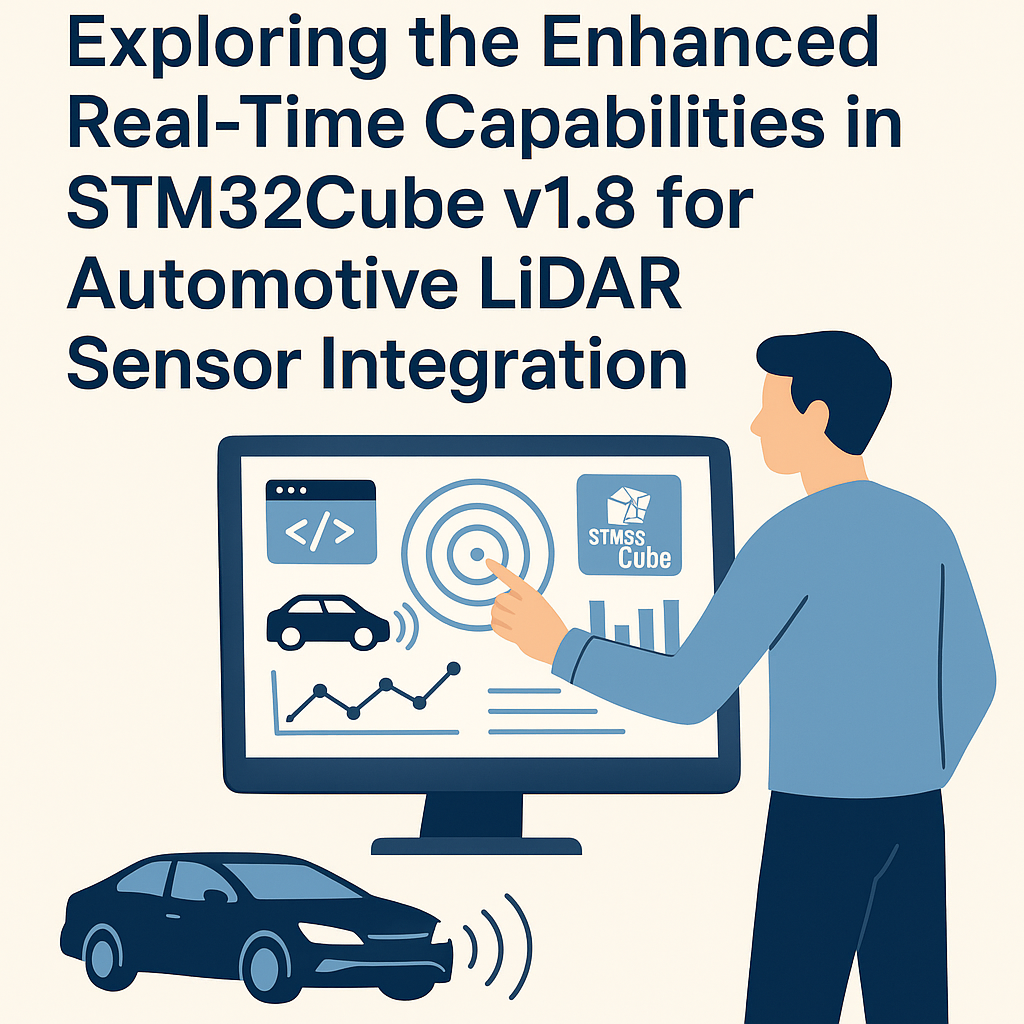Introduction
The automotive industry is rapidly evolving, with advanced technologies like LiDAR sensors becoming integral for enhancing vehicle safety and automation. The STM32Cube v1.8 framework has introduced enhanced real-time capabilities that significantly improve the integration of these sensors. In this blog post, we will explore the key features and benefits of STM32Cube v1.8 for automotive LiDAR sensor integration.
Understanding LiDAR Sensors in Automotive Applications
LiDAR (Light Detection and Ranging) sensors use laser light to measure distances and create high-resolution maps of the environment. This technology is pivotal for applications such as:
- Autonomous driving
- Obstacle detection
- Traffic monitoring
- Adaptive cruise control
Integrating LiDAR sensors requires robust processing capabilities and real-time data handling to ensure accurate and timely responses.
Key Features of STM32Cube v1.8
STM32Cube v1.8 brings a suite of enhancements designed to support the rigorous demands of automotive applications, particularly in real-time data processing. Some of the key features include:
- Advanced Timer Management: New timer configurations allow for precise synchronization with LiDAR sensor output.
- Improved Interrupt Handling: Faster interrupt response times ensure that critical data is processed promptly.
- Enhanced DMA Support: Direct Memory Access (DMA) enhancements facilitate high-speed data transfers without CPU intervention.
- Real-Time Operating System (RTOS) Integration: Seamless integration with popular RTOS options improves task scheduling and resource management.
- Low Latency Communication Protocols: Support for protocols like CAN and Ethernet enables quick data transmission between sensors and processing units.
Benefits of Enhanced Real-Time Capabilities
The enhancements in STM32Cube v1.8 directly translate into tangible benefits for automotive LiDAR sensor integration:
- Increased Accuracy: Real-time capabilities reduce latency in data processing, leading to more accurate environmental mapping.
- Improved Safety: Rapid response to sensor input enhances vehicle safety features by enabling timely actions.
- Scalability: The framework supports scaling from simple to complex systems, making it suitable for various vehicle types.
- Resource Efficiency: Optimized resource management allows for handling multiple sensor inputs without performance degradation.
Implementing STM32Cube v1.8 for LiDAR Integration
Integrating LiDAR sensors using STM32Cube v1.8 involves several steps:
- System Design: Define the system architecture, including the number of sensors and their placement.
- Configuration: Utilize STM32CubeMX to configure peripherals, timers, and DMA settings tailored for LiDAR integration.
- Software Development: Write application code leveraging the enhanced real-time features, focusing on efficient interrupt handling and data processing.
- Testing: Conduct rigorous testing in various scenarios to ensure the system meets performance and safety standards.
- Optimization: Fine-tune the system based on testing outcomes, focusing on latency reduction and resource utilization.
Challenges and Considerations
While STM32Cube v1.8 offers many advantages, developers must also consider potential challenges:
- Complexity: The advanced features may introduce complexity in configuration and programming.
- Power Consumption: Enhanced performance can lead to higher power consumption, necessitating careful power management strategies.
- Compatibility: Ensuring compatibility with existing systems and components can be a challenge.
Conclusion
STM32Cube v1.8 significantly enhances the capabilities of automotive LiDAR sensor integration, providing developers with the tools needed to create efficient and reliable systems. By leveraging the advanced real-time features, engineers can ensure that LiDAR sensors operate optimally, contributing to safer and more autonomous vehicles. As the automotive landscape continues to evolve, the adoption of such sophisticated frameworks will play a crucial role in driving innovation and enhancing vehicle performance.



